|
Books Should Be Free Loyal Books Free Public Domain Audiobooks & eBook Downloads |
|
|
Books Should Be Free Loyal Books Free Public Domain Audiobooks & eBook Downloads |
|
Art |
|---|
Book type:
Sort by:
View by:
|
By: Mark Twain | |
|---|---|
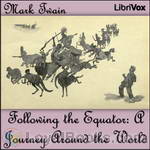 Following the Equator: A Journey Around the World
Following the Equator: A Journey Around the World
Following the Equator (American English title) or More Tramps Abroad (English title) is a non-fiction travelogue published by American author Mark Twain in 1897. Twain was practically bankrupt in 1894 due to a failed investment into a “revolutionary” typesetting machine. In an attempt to extricate himself from debt of $100,000 (equivalent of about $2 million in 2005) he undertook a tour of the British Empire in 1895, a route chosen to provide numerous opportunities for lectures in the English language... | |
By: Jules Verne (1828-1905) | |
|---|---|
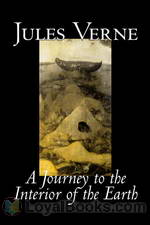 A Journey to the Interior of the Earth
A Journey to the Interior of the Earth
A historical manuscript penned by a medieval Norse poet. A mysterious code. Three intrepid explorers. A subterranean world filled with prehistoric creatures and proto-humans. These are some of the brilliant ideas that are superbly blended in A Journey to the Interior of the Earth by Jules Verne. Jules Verne, the French writer who created several works of science fiction, adventure stories and very popular novels, wrote A Journey to the Interior of the Earth in 1864. Some of his other books explore different aspects of geography, space and time travel... | |
 Celebrated Travels and Travellers, vol. 1
Celebrated Travels and Travellers, vol. 1
The famous writer of great adventure stories Jules Verne wrote also several lesser known, but good non-fiction works. "Celebrated travels and travellers" tells the story of geographical discovery in the same well written and precise manner we are used to finding in Verne’s fiction books. This book is divided into 3 volumes. This is the first volume, named the "Exploration of the World" and it covers the period in the World's history of exploration from B.C. 505 to the close of the 17th century. The second and third volumes are respectively entitled "The great navigators of the 18th century" and "The great navigators of the 19th century".Coordinated by Kristine Bekere and Kajo. | |
By: H. G. Wells (1866-1946) | |
|---|---|
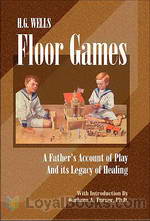 Floor Games
Floor Games
H.G. Wells had so much fun playing with his children on the floor of their playroom, he decided to write a jovial little book to inspire other parents in their pursuit of quality time with the kids. While the raw materials available from hobby stores of his day were woefully short of the variety and quality of what can be bought easily now, he and his sons created their own worlds to rule. This short work describes two games of imagination played out upon the floor of his home – an archipelago of islands, and a thoroughly integrated city, conveniently organized with two mayoral positions for his sons “G... | |
By: Edgar Rice Burroughs (1875-1950) | |
|---|---|
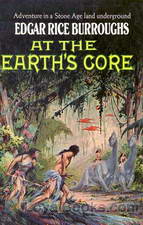 At the Earth's Core
At the Earth's Core
This is the first book in the Pellucidar series. Pellucidar is a fictional Hollow Earth milieu invented by Edgar Rice Burroughs for a series of action adventure stories. The stories initially involve the adventures of mining heir David Innes and his inventor friend Abner Perry after they use an “iron mole” to burrow 500 miles into the earth’s crust. (adapted from Wikipedia) | |
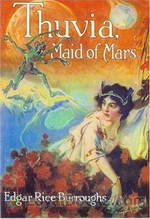 Thuvia, Maid of Mars
Thuvia, Maid of Mars
Published in 1920, Thuvia, Maid of Mars is the fourth book in the Barsoom series and concentrates on Carthoris, the son of infamous John Carter, and Thuvia, the princess of Ptarth, as they find themselves entangled in a complex web of love and strict traditions of Barsoom. A typical Burroughs piece, the installment contains all the required elements of an effective pulp fiction, including a hero, a damsel in distress, unforeseen complications, and a generous supply of action. Welcoming a new... | |
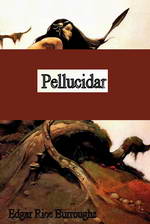 Pellucidar
Pellucidar
Pellucidar is a fictional “Hollow Earth” milieu invented by Edgar Rice Burroughs for a series of action adventure stories. The stories initially involve the adventures of mining heir David Innes and his inventor friend Abner Perry after they use an “iron mole” to burrow 500 miles into the earth’s crust. This is the second book in the series. | |
By: Rudyard Kipling | |
|---|---|
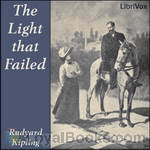 The Light that Failed
The Light that Failed
This novel, first published in 1890, follows the life of Dick Heldar, a painter. Most of the novel is set in London, but many important events throughout the story occur in Sudan or India. It was made into a 1916 film with Jose Collins and a 1939 film by Paramount starring Ronald Colman. | |
By: Stephen Leacock (1869-1944) | |
|---|---|
 Chronicles of Canada Volume 20 - Adventurers of the Far North
Chronicles of Canada Volume 20 - Adventurers of the Far North
This is volume 20 ofThe Chronicles of Canada series. This volume describes the explorers who braved the Canadian Arctic in search of the Northwest Passage, focusing on Samuel Hearne, Sir Alexander Mackenzie, and Sir John Franklin. | |
By: Henry James (1843-1916) | |
|---|---|
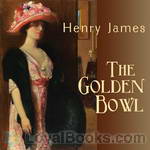 The Golden Bowl
The Golden Bowl
The Golden Bowl is a 1904 novel by Henry James. Set in England, this complex, intense study of marriage and adultery completes what some critics have called the “major phase” of James’ career. The Golden Bowl explores the tangle of interrelationships between a father and daughter and their respective spouses. The novel focuses deeply and almost exclusively on the consciousness of the central characters, with sometimes obsessive detail but also with powerful insight. | |
 The Real Thing
The Real Thing
The Real Thing is, on one level, a somewhat ironic tale of an artist and two rather particular models. Yet it also raises questions about the relationship between the notion of reality in our humdrum world, and the means that an artist must use in trying to achieve, or reflect, that reality. Though the protagonist is an artist and illustrator of books, not a writer, it's not hard to imagine that James has himself, and other writers, in mind. | |
By: Nathaniel Hawthorne (1804-1864) | |
|---|---|
 The Marble Faun
The Marble Faun
The Marble Faun is Hawthorne's most unusual romance. Writing on the eve of the American Civil War, Hawthorne set his story in a fantastical Italy. The romance mixes elements of a fable, pastoral, gothic novel, and travel guide. In the spring of 1858, Hawthorne was inspired to write his romance when he saw the Faun of Praxiteles in a Roman sculpture gallery. The theme, characteristic of Hawthorne, is guilt and the Fall of Man. The four main characters are Miriam, a beautiful painter who is compared... | |
By: Wilkie Collins (1824-1889) | |
|---|---|
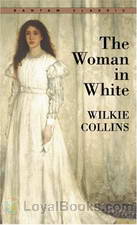 The Woman in White
The Woman in White
Wilkie Collins’s The Woman in White tells the story of two half-sisters, Laura Fairlie and Marian Halcombe who were embroiled in the sinister plot of Sir Percival Glyde and Count Fosco to take over their family’s wealth. It’s considered to be one of the first “sensation novels” to be published. Like most novels that fall into this category, the protagonists here are pushed to their limits by the villains before they finally got the justice they deserved. The story begins with Walter Hartright helping a woman dressed in white who turned out to have escaped from a mental asylum... | |
By: Mary Roberts Rinehart (1876-1958) | |
|---|---|
 Tenting To-Night; A Chronicle Of Sport And Adventure In Glacier Park And The Cascade Mountains
Tenting To-Night; A Chronicle Of Sport And Adventure In Glacier Park And The Cascade Mountains
This is the second of two travelogues published by Mary Roberts Rinehart (1876-1958). Both deal with Glacier National Park, and this book also deals with the Cascade Mountains (The other is entitled Through Glacier Park). Rinehart wrote hundreds of short stories, poems, travelogues and articles, though she is most famous for her mystery stories. The region that became Glacier National Park was first inhabited by Native Americans and upon the arrival of European explorers, was dominated by the Blackfeet in the east and the Flathead in the western regions. | |
By: Garrett P. Serviss (1851-1929) | |
|---|---|
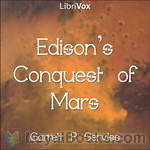 Edison's Conquest of Mars
Edison's Conquest of Mars
Edison’s Conquest of Mars, by Garrett P. Serviss, is one of the many science fiction novels published in the nineteenth century. Although science fiction was not at the time thought of as a distinct literary genre, it was a very popular literary form, with almost every fiction magazine regularly publishing science fiction stories and novels. “Edison’s Conquest of Mars” was published in 1898 as an unauthorized sequel to H. G. Wells’s The War of the Worlds, but did not achieve the fame of its predecessor. The book was endorsed by Thomas Edison, the hero of the book — though not by Wells. | |
By: Vachel Lindsay (1879-1931) | |
|---|---|
 The Art of the Moving Picture
The Art of the Moving Picture
"This 1922 book by poet and sometime cultural critic Vachel Lindsay might have been the first to treat the then-new medium of moving pictures as an art form, one that was potentially as rich, complex, mysterious as far older ones, and whose physical and aesthetic properties were only starting to be understood. The highlight of the book might be “The Motion Picture of Fairy Splendor,” which examines the relationship between film storytelling, magic, myths, legends and bedtime stories. It’s discombobulating, in a good way, to read Lindsay’s attempts to grapple with what, precisely, cinema is... | |
By: Sir Arthur Conan Doyle (1859-1930) | |
|---|---|
 The Hound of the Baskervilles (dramatic reading)
The Hound of the Baskervilles (dramatic reading)
The Hound of the Baskervilles is the third of four crime novels by Sir Arthur Conan Doyle featuring the detective Sherlock Holmes. Originally serialised in The Strand Magazine from August 1901 to April 1902, it is set largely on Dartmoor in Devon in England's West Country and tells the story of an attempted murder inspired by the legend of a fearsome, diabolical hound. | |
By: Sir Walter Scott (1771-1832) | |
|---|---|
 Kenilworth
Kenilworth
An Elizabethan era historical novel by Scotland’s master of fiction, Sir Walter Scott. With a cast of historical and created characters, including the Queen herself, Scott presents the sad history and tragic consequences of the secretive marriage of young Amy Robsart and the Earl of Leicester. (Summary by SK) | |
By: John Kendrick Bangs (1862-1922) | |
|---|---|
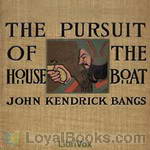 The Pursuit of the House-Boat
The Pursuit of the House-Boat
This sequel to Bangs' A House-Boat on the Styx continues the "thought-experiment" of bringing various historical and fictional figures together, detailing the adventures of the ladies of Hades after they are kidnapped by pirates and the attempts of the Associated Shades (led by Sherlock Holmes) to retrieve their house-boat. (Introduction by Emma Joyce) | |
 R. Holmes and Co.
R. Holmes and Co.
Raffles Holmes is introduced in these stories as the son of the great Sherlock Holmes. He is also revealed to be the grandson of A.J. Raffles, a gentleman thief pursued by Sherlock Holmes many years earlier. This apparently contradictory family background sets the stage for his colorful and amusing adventures. | |
By: Charles Morris (1833-1922) | |
|---|---|
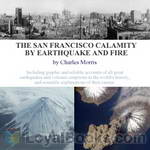 The San Francisco Calamity by Earthquake and Fire
The San Francisco Calamity by Earthquake and Fire
The first half of this book describes the devastating earthquake that hit San Francisco in 1906, and the subsequent destruction caused by fire. Various eyewitnesses and victims give their account on the tragedy. In the second half, a number of different other earthquakes and volcanic eruptions are retold, like the eruption of the Vesuvius that destroyed Pompeij or the explosion of the Krakatoa, together with scientific explanations for the causes of earthquakes and the eruption of volcanos. | |
By: Agnes Ethel Conway (1885-1950) | |
|---|---|
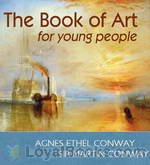 The Book of Art for Young People
The Book of Art for Young People
This is a charming book on Art History for children (and everyone else). Each chapter focuses on a great painting, reproduced in color in the original text. The authors explain the story behind the paintings, as well as the life, times, and techniques of the artists. | |
By: Harry Houdini | |
|---|---|
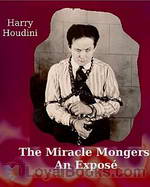 The Miracle Mongers, an Exposé,
The Miracle Mongers, an Exposé,
“A complete exposé of the modus operandi of fire eaters, heat resisters, poison eaters, venomous reptile defiers, sword swallowers, human ostriches, strong men, etc.”, [by Harry Houdini, from the subtitle]. | |
By: Okakura Kakuzo (1863-1913) | |
|---|---|
 The Book of Tea
The Book of Tea
The Book of Tea was written by Okakura Kakuzo in the early 20th century. It was first published in 1906, and has since been republished many times. – In the book, Kakuzo introduces the term Teaism and how Tea has affected nearly every aspect of Japanese culture, thought, and life. The book is noted to be accessibile to Western audiences because though Kakuzo was born and raised Japanese, he was trained from a young age to speak English; and would speak it all his life, becoming proficient at communicating his thoughts in the Western Mind... | |
By: John Ruskin (1819-1900) | |
|---|---|
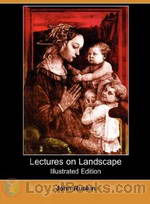 Lectures on Landscape
Lectures on Landscape
A series of lectures on landscape painting delivered at Oxford in 1871, by artist, critic, and social commentator, John Ruskin. | |
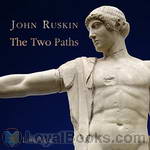 The Two Paths
The Two Paths
"The Two Paths" is a collection of five lectures delivered in 1858 and 1859 by John Ruskin on art and architecture. This is how the author himself presents the book: "The following addresses, though spoken at different times, are intentionally connected in subject; their aim being to set one or two main principles of art in simple light before the general student, and to indicate their practical bearing on modern design. The law which it has been my effort chiefly to illustrate is the dependence of all noble design, in any kind, on the sculpture or painting of Organic Form." The most famous of these, the fifth lecture, is commonly known simply as "The Work of Iron" | |
 The Stones of Venice, volume 1
The Stones of Venice, volume 1
The Stones of Venice is a three-volume treatise on Venetian art and architecture by English art historian John Ruskin, first published from 1851 to 1853. Intending to prove how the architecture in Venice exemplified the principles he discussed in his earlier work, The Seven Lamps of Architecture, Ruskin examined the city in detail, describing for example over eighty churches. He discusses architecture of Venice's Byzantine, Gothic and Renaissance periods, and provides a general history of the city as well... | |
By: William Dean Howells (1837-1920) | |
|---|---|
 Coast of Bohemia
Coast of Bohemia
William Dean Howells is at his iconoclastic best in this exploration of bourgeois values, particularly in the clash between respectable society and the dubious bohemian world of Art and Poetry. Cornelia Saunders has everything going for her in her middle-class world: comfort, good looks, attentive young men. She seems willing to risk it all for the sake of what might be an artistic Gift, venturing with great trepidation to put her foot over the line into Bohemia to see if it might be the thing for her. Skewering the conventions of sentimental literature as usual, Howells keeps the reader guessing to the end as to the fate of Cornelia and her Gift. | |
By: Fanny Dickerson Bergen (1846-1924) | |
|---|---|
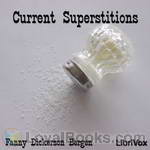 Current Superstitions
Current Superstitions
No matter how enlightened, chances are you’ve been raised around superstitious lore of one kind or another. Fanny Dickerson Bergen was one of the original researchers of North American oral traditions relating to such key life events and experiences as babyhood and childhood, marriage, wishes and dreams, luck, warts and cures, death omens and mortuary customs, and “such truck,” as Huck Finn would say. You’ll be surprised at how many of these old saws you’ll know. Here’s a quote from... | |
By: Roald Amundsen (1872-1928) | |
|---|---|
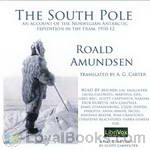 The South Pole; an account of the Norwegian Antarctic expedition in the Fram, 1910-12
The South Pole; an account of the Norwegian Antarctic expedition in the Fram, 1910-12
In contrast to Scott’s South Pole expedition, Amundsen’s expedition benefited from good equipment, appropriate clothing, and a fundamentally different primary task (Amundsen did no surveying on his route south and is known to have taken only two photographs) Amundsen had a better understanding of dogs and their handling, and he used of skis more effectively. He pioneered an entirely new route to the Pole and they returned. In Amundsen’s own words: “Victory awaits him who has everything in order — luck, people call it... | |
By: U. Waldo Cutler | |
|---|---|
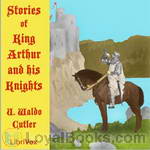 Stories of King Arthur and His Knights
Stories of King Arthur and His Knights
Stories of King Arthur and His Knights. Retold from Malory’s “Morte dArthur”. | |
By: Benvenuto Cellini ((1500-1571)) | |
|---|---|
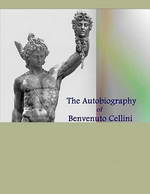 The Autobiography of Benvenuto Cellini
The Autobiography of Benvenuto Cellini
Cellini’s autobiographical memoirs, which he began writing in Florence in 1558, give a detailed account of his singular career, as well as his loves, hatreds, passions, and delights, written in an energetic, direct, and racy style. They show a great self-regard and self-assertion, sometimes running into extravagances which are impossible to credit. He even writes in a complacent way of how he contemplated his murders before carrying them out. He writes of his time in Paris: Parts of his tale recount... | |
By: Amy Steedman | |
|---|---|
 Knights of Art - Stories of the Italian Painters
Knights of Art - Stories of the Italian Painters
A children's version of the Lives of Artists by Vassari with many Illustrations. Of course we won't be able to show the paintings but the descriptions and the anecdotes are interesting and may lead a child to further interest. | |
By: Lawrence Beesley (1877-1967) | |
|---|---|
 The Loss of the S. S. Titanic
The Loss of the S. S. Titanic
This is a 1st hand account written by a survivor of the Titanic about that fateful night and the events leading up to it as well as the events that followed its sinking. | |
By: Joseph Lewis French (1858-1936) | |
|---|---|
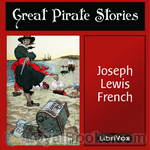 Great Pirate Stories
Great Pirate Stories
Piracy embodies the romance of the sea at its highest expression. It is a sad but inevitable commentary on our civilization, that, so far as the sea is concerned, it has developed from its infancy down to a century or so ago, under one phase or another of piracy. If men were savages on land they were doubly so at sea, and all the years of maritime adventure–years that added to the map of the world till there was little left to discover–could not wholly eradicate the piratical germ. | |
By: Sir Wilfred Grenfell (1865-1940) | |
|---|---|
 Adrift on an Ice-Pan
Adrift on an Ice-Pan
This autobiographical work describes the author’s harrowing experience caught on a small drifting piece of ice, while crossing a frozen bay by dog team on the Northern Peninsula of Newfoundland. | |
By: Edward R. Shaw (1855-1903) | |
|---|---|
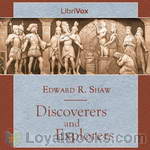 Discoverers and Explorers
Discoverers and Explorers
Tales of the brave and daring explorers that ventured into the unknown “Sea of Darkness” where it was thought monsters and angry gods lived. They dared to sail near the equator which was thought to have such intense heat that it would boil the ocean water. It was also commonly thought at the time that the world was flat, and the ships would fall off the face of the earth. These men overcame these fears to explore and discover new lands. | |
By: Ruth Edna Kelley | |
|---|---|
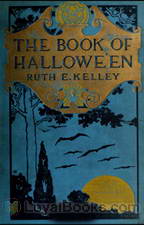 The Book of Hallowe'en
The Book of Hallowe'en
This book is intended to give the reader an account of the origin and history of Hallowe’en, how it absorbed some customs belonging to other days in the year,—such as May Day, Midsummer, and Christmas. The context is illustrated by selections from ancient and modern poetry and prose, related to Hallowe’en ideas. | |
By: K. Langloh Parker | |
|---|---|
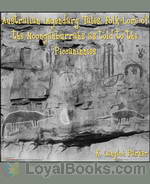 Australian Legendary Tales Folk-Lore of the Noongahburrahs As Told To The Piccaninnies
Australian Legendary Tales Folk-Lore of the Noongahburrahs As Told To The Piccaninnies
A Collection of Australian Aboriginal Legendary Folk-Lore Tales, legends of the Narran tribe, known among themselves as Noongahburrahs. | |
By: Mary MacGregor | |
|---|---|
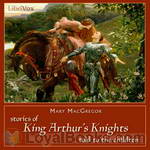 Stories of King Arthur's Knights Told to the Children
Stories of King Arthur's Knights Told to the Children
A collection of Arthurian tales retold for children. | |
By: Théodule Ribot (1839-1916) | |
|---|---|
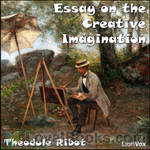 Essay on the Creative Imagination
Essay on the Creative Imagination
“It is quite generally recognized that psychology has remained in the semi-mythological, semi-scholastic period longer than most attempts at scientific formulization. For a long time it has been the “spook science” per se, and the imagination, now analyzed by M. Ribot in such a masterly manner, has been one of the most persistent, apparently real, though very indefinite, of psychological spooks. Whereas people have been accustomed to speak of the imagination as an entity sui generis, as a... | |
By: Lacy Collison-Morley | |
|---|---|
 Greek and Roman Ghost Stories
Greek and Roman Ghost Stories
A non-fiction work, comparing and collecting ghost stories by Classical Greek and Republican or Imperial Roman authors. | |
By: Carlton McCarthy (1847-1936) | |
|---|---|
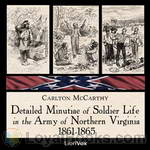 Detailed Minutiae of Soldier Life in the Army of Northern Virginia, 1861-1865
Detailed Minutiae of Soldier Life in the Army of Northern Virginia, 1861-1865
The author, who fought as a private in the Army of Northern Virginia during the Civil War, describes the Confederate soldier’s daily struggles with hunger, illness, fear, and the perils of combat; as well as his pride of service, love of comrades, and courage in the face of overwhelming odds | |
By: Friedrich Kerst | |
|---|---|
 Mozart, The Man and the Artist as Revealed in His Own Words
Mozart, The Man and the Artist as Revealed in His Own Words
Wolfgang Amadeus Mozart. His name is one of the most recognizable names in history and one of the most enduring of composers. At age 5, this “wunderkinder” took to the stage and began his life as a prolific and celebrated creator-genius of such luminous works the world has not known since. This collection of morsels taken from his personal letters is engaging and gives a look into the mind of the boy wonder. Was he mad? Was he miraculous? | |
By: Cornelia Mee | |
|---|---|
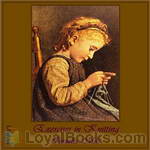 Exercises in Knitting
Exercises in Knitting
Mrs. Mee, her husband, and her sister ran a yarn and needlework import/warehouse business in Bath, England. Her books primarily contain practical everyday items that knit up quickly with the busy homemaker in mind. At this time, published knitting “receipts” did not contain abbreviations and were laborious to use. They were, however, rich in error! Later in her career, due to circumstances of war and the resulting social stress and poverty, many of her knitting books were printed for ladies’ charitable societies, which used her knitting “receipts” to clothe the poor mill workers who were out of work due to the American Civil War and the embargo of cotton. | |
By: George L. Apperson (1857-1937) | |
|---|---|
 The Social History of Smoking
The Social History of Smoking
This work tells the history of smoking in England from the social point of view. Thus it does not deal with the history of tobacco growing or tobacco related manufacture, but is rather the story of how smoking has fitted in with the fashions and customs throughout the ages, and the changes in the attitude of society towards smoking. | |
By: Padraic Colum (1881-1972) | |
|---|---|
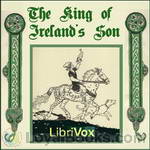 The King of Ireland's Son
The King of Ireland's Son
The King of Ireland's Son is a children's novel published in Ireland in 1916 written by Padraic Colum, and illustrated by Willy Pogany. It is the story of the eldest of the King of Ireland's sons, and his adventures winning and then finding Fedelma, the Enchanter's Daughter, who after being won is kidnapped from him by the King of the Land of Mist. It is solidly based in Irish folklore, itself being originally a folktale. (Introduction by Wikipedia) | |
By: Jennie Ellis Keysor | |
|---|---|
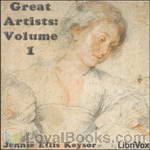 Great Artists
Great Artists
Biographies of Raphael Santi, Murillo, Peter Paul Rubens, and Albrecht Durer. This is a wonderful tool for art study as there are references for further study, as well as ideas for language arts to incorporate into the study. | |
By: Cecil Henry Bompas | |
|---|---|
 Folklore of the Santal Parganas
Folklore of the Santal Parganas
This is an intriguing collection of folklore from the Santal Parganas, a district in India located about 150 miles from Calcutta. As its Preface implies, this collection is intended to give an unadulterated view of a culture through its folklore. It contains a variety of stories about different aspects of life, including family and marriage, religion, and work. In this first volume, taken from Part I, each story is centered around a particular human character. These range from the charmingly clever (as in the character, The Oilman, in the story, “The Oilman and His Sons”) to the tragically comical (as in the character, Jhore, in the story “Bajun and Jhore”)... | |
By: Goldsworthy Lowes Dickinson (1862-1932) | |
|---|---|
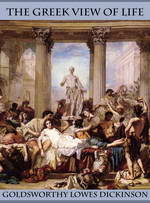 The Greek View of Life
The Greek View of Life
“With the Greek civilisation beauty perished from the world. Never again has it been possible for man to believe that harmony is in fact the truth of all existence.”This elegantly-written work provides a splendid introduction to the Greeks of the classic period: how they thought, wrote, and organised their lives and loves. Although it dates from the 1890s, there is very little about it that has dated. To its author’s credit, the subject of “Greek love” is dealt with in a sane and factual context - despite the judicial assassination of Oscar Wilde going on in the background... | |
By: Giorgio Vasari (1511-1574) | |
|---|---|
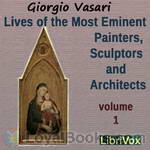 Lives of the Most Eminent Painters, Sculptors and Architects
Lives of the Most Eminent Painters, Sculptors and Architects
The Lives of the Most Excellent Italian Painters, Sculptors, and Architects, from Cimabue to Our Times, or Le Vite delle più eccellenti pittori, scultori, ed architettori, as it was originally known in Italian, is a series of artist biographies written by 16th century Italian painter and architect Giorgio Vasari, which is considered "perhaps the most famous, and even today the most- read work of the older literature of art", "some of the Italian Renaissance's most influential writing on art", and "one of the founding texts in art history"... | |
By: Harold Speed | |
|---|---|
 The Practice and Science of Drawing
The Practice and Science of Drawing
THE PRACTICE & SCIENCE OF DRAWINGBY HAROLD SPEEDPREFACEPermit me in the first place to anticipate the disappointment of any student who opens this book with the idea of finding wrinkles on how to draw faces, trees, clouds, or what not, short cuts to excellence in drawing, or any of the tricks so popular with the drawing masters of our grandmothers and still dearly loved by a large number of people. No good can come of such methods, for there are no short cuts to excellence. But help of a very practical kind it is the aim of the following pages to give; although it may be necessary to make a greater call upon the intelligence of the student than these Victorian methods attempted... | |
By: George Hamilton | |
|---|---|
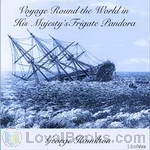 Voyage Round the World in His Majesty's Frigate Pandora
Voyage Round the World in His Majesty's Frigate Pandora
George Hamilton was the surgeon assigned to the frigate Pandora. The British Admiralty ordered the ship to the Pacific to arrest the Bounty mutineers and bring them back to England for trial. The commander, Captain Edward Edwards, also was ordered to chart the passage between Australia and New Guinea. While Edwards managed to arrest the mutineers still on Tahiti, he sank the Pandora on a reef near Australia. Hamilton tells this story and also the story of the crew’s fate after the Pandora sank. | |
By: Emily Burbank (?-?) | |
|---|---|
 Woman as Decoration
Woman as Decoration
A guide for women to complement their dress to their surroundings, be it in their own home, on outings or on stage. Please note that there is a separate chapter with the captions of the fashion plates which can be found in the online text. | |
By: Elsie Spicer Eells | |
|---|---|
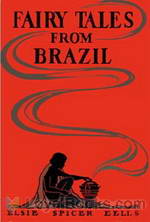 Fairy Tales from Brazil
Fairy Tales from Brazil
This book, subtitled "How and Why Tales from Brazilian Folk-Lore", is a collection of short stories, most of them etiologial myths from Brazilian Indian Folklore. | |
By: William Sangster (1808-1888) | |
|---|---|
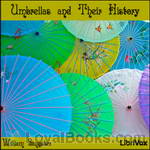 Umbrellas and Their History
Umbrellas and Their History
A whimsically serious look at the umbrella and society. | |
By: Thomas Tapper (1864-1958) | |
|---|---|
 Music Talks With Children
Music Talks With Children
"A book of this kind, though addressed to children, must necessarily reach them through an older person. The purpose is to suggest a few of the many aspects which music may have even to the mind of a child. If these chapters, or whatever may be logically suggested by them, be actually used as the basis of simple Talks with children, music may become to them more than drill and study. They should know it as an art, full of beauty and of dignity; full of pure thought and abounding in joy. Music with these characteristics is the true music of the heart... | |
By: Frederick Litchfield | |
|---|---|
 Illustrated History of Furniture
Illustrated History of Furniture
From the Earliest to the Present TimeBy Frederick Litchfield.PREFACE.In the following pages the Author has placed before the reader an account of the changes in the design of Decorative Furniture and Woodwork, from the earliest period of which we have any reliable or certain record until the present time. A careful selection of illustrations has been made from examples of established authenticity, the majority of which are to be seen, either in the Museums to which reference is made, or by permission of the owners; and the representations of the different interiors will convey an idea of the character and disposition of the furniture of the periods to which they refer... | |
By: Katharine Elizabeth Dopp (1863-1944) | |
|---|---|
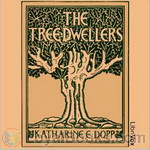 The Tree-Dwellers
The Tree-Dwellers
Katharine E. Dopp was well-known as a teacher and writer of children’s textbooks at the turn of the 20th Century. She was among the first educators to encourage the incorporation of physical and practical activity into the elementary school curriculum at a time when such activities were becoming less commonplace in a child’s home environment. The Tree-Dwellers – The Age of Fear is the first in a series of elementary school texts written by Ms. Dopp that focus on the anthropological development of early human groups... | |
By: Ignatius Loyola Donnelly (1831-1901) | |
|---|---|
 Atlantis: The Antediluvian World
Atlantis: The Antediluvian World
"Atlantis: The Antediluvian World is a book published during 1882 by Minnesota populist politician Ignatius L. Donnelly, who was born in Philadelphia, Pennsylvania during 1831. Donnelly considered Plato's account of Atlantis as largely factual and attempted to establish that all known ancient civilizations were descended from this supposed lost land. Many of its theories are the source of many modern-day concepts we have about Atlantis, like the civilization and technology beyond its time, the origins of all present races and civilizations, a civil war between good and evil, etc." | |
By: Estelle M. Hurll (1863-1924) | |
|---|---|
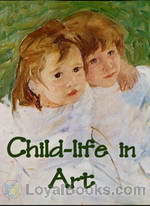 Child-life in Art
Child-life in Art
The poetry of childhood is full of attractiveness to the artist, and many and varied are the forms in which he interprets it. The Christ-child has been his highest ideal. All that human imagination could conceive of innocence and purity and divine loveliness has been shown forth in the delineation of the Babe of Bethlehem. The influence of such art has made itself felt upon all child pictures. It matters not whether the subject be a prince or a street-waif; the true artist sees in him something which is lovable and winning, and transfers it to his canvas for our lasting pleasure. | |
By: Dudley Landon Vaill (1873-?) | |
|---|---|
 The County Regiment
The County Regiment
A sketch of the second regiment of Connecticut volunteer heavy artillery, originally the Nineteenth Volunteer Infantry, in the Civil War. | |
By: William Hanford Edwards | |
|---|---|
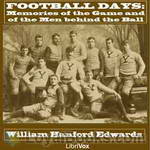 Football Days: Memories of the Game and of the Men behind the Ball
Football Days: Memories of the Game and of the Men behind the Ball
A book reminiscent of the days when football was gaining popularity in America by MHAIJH85 | |
By: William Ralston Shedden-Ralston (1828-1889) | |
|---|---|
 Russian Fairy Tales
Russian Fairy Tales
Russian Fairy Tales is an anthology of stories by a noted Russian scholar and translator. The 51 stories are thematically organized with introductory material to put them both in the context of Russian folklore and in their relation to the myths of other cultures. This text has something for the intellectual reader as well as for someone who just likes a good fairy tale. | |
By: Apsley Cherry-Garrard (1886-1959) | |
|---|---|
 Worst Journey in the World, Vol 1
Worst Journey in the World, Vol 1
The Worst Journey in the World is a memoir of the 1910–1913 British Antarctic Expedition led by Robert Falcon Scott. It was written and published in 1922 by a survivor of the expedition, Apsley Cherry-Garrard, and has earned wide praise for its frank treatment of the difficulties of the expedition, the causes of its disastrous outcome, and the meaning (if any) of human suffering under extreme conditions. | |
By: Richard Henry Dana, Jr. (1815-1882) | |
|---|---|
 Two Years Before the Mast
Two Years Before the Mast
| |
By: John Charles Van Dyke | |
|---|---|
 A Text-Book of the History of Painting
A Text-Book of the History of Painting
A TEXT-BOOK OF THE HISTORY OF PAINTINGBY JOHN C. VAN DYKE, L.H.D.PREFACE.The object of this series of text-books is to provide concise teachable histories of art for class-room use in schools and colleges. The limited time given to the study of art in the average educational institution has not only dictated the condensed style of the volumes, but has limited their scope of matter to the general features of art history. Archaeological discussions on special subjects and aesthetic theories have been avoided... | |
By: Carolyn Steward Taylor | |
|---|---|
 Werewolf -- Five Pieces
Werewolf -- Five Pieces
Five stories and essays about werewolves. | |
By: Charles Alexander Eastman (1858-1939) | |
|---|---|
 Indian Child Life
Indian Child Life
The author was raised as an American Indian and describes what it was like to be an Indian boy (the first 7 chapters) and an Indian Girl (the last 7 chapters). This is very different from the slanted way the white man tried to picture them as 'savages' and 'brutes.'Quote: Dear Children:—You will like to know that the man who wrote these true stories is himself one of the people he describes so pleasantly and so lovingly for you. He hopes that when you have finished this book, the Indians will seem to you very real and very friendly... | |
By: Wassily Kandinsky (1866-1944) | |
|---|---|
 Concerning the Spiritual in Art
Concerning the Spiritual in Art
Published in 1911, Kandinsky's book compares the spiritual life of humanity to a pyramid -- the artist has a mission to lead others to the pinnacle with his work. The point of the pyramid is those few, great artists. It is a spiritual pyramid, advancing and ascending slowly even if it sometimes appears immobile. During decadent periods, the soul sinks to the bottom of the pyramid; humanity searches only for external success, ignoring spiritual forces. | |
By: Lord Redesdale (1837-1916) | |
|---|---|
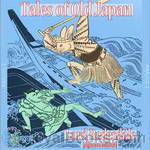 Tales of Old Japan
Tales of Old Japan
Tales of Old Japan by Lord Redesdale is a collection of short stories focusing on Japanese life of the Edo period (1603 - 1868). It contains a number of classic Japanese stories, fairy tales, and other folklore; as well as Japanese sermons and non-fiction pieces on special ceremonies in Japanese life, such as marriage and harakiri, as observed by Lord Redesdale. The best know story of these is "The Forty-seven Ronins" a true account of samurai revenge as it happened at the beginning of 18th century Japan... | |
By: Talbot Hughes (1869-1942) | |
|---|---|
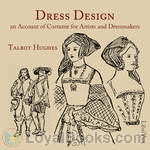 Dress Design: An Account of Costume for Artists and Dressmakers
Dress Design: An Account of Costume for Artists and Dressmakers
Explanations of Western European trends in men and women's fashion from prehistoric times to the Victorian Era. | |
By: Robert Wood Williamson | |
|---|---|
 The Mafulu
The Mafulu
The Mafulu, Mountain People of British New GuineaBy Robert W. WilliamsonINTRODUCTION By Dr. A.C. Haddon It is a great pleasure to me to introduce Mr. Williamson's book to the notice of ethnologists and the general public, as I am convinced that it will be read with interest and profit. Perhaps I may be permitted in this place to make a few personal remarks. Mr. Williamson was formerly a solicitor, and always had a great longing to see something of savage life, but it was not till about four years ago that he saw his way to attempting the realisation of this desire by an expedition to Melanesia... | |
By: Marie D. Webster (1859-1956) | |
|---|---|
 Quilts, Their Story and How to Make Them
Quilts, Their Story and How to Make Them
Although the quilt is one of the most familiar and necessary articles in our households, its story is yet to be told. In spite of its universal use and intimate connection with our lives, its past is a mystery which -- at the most -- can only be partially unravelled. (from the Introduction) | |
By: Lucy Abbot Throop | |
|---|---|
 Furnishing the Home of Good Taste
Furnishing the Home of Good Taste
FURNISHING THE HOME OF GOOD TASTEA BRIEF SKETCH OF THE PERIOD STYLES IN INTERIOR DECORATION WITH SUGGESTIONS AS TO THEIR EMPLOYMENT IN THE HOMES OF TODAY BY LUCY ABBOT THROOP Preface To try to write a history of furniture in a fairly short space is almost as hard as the square peg and round hole problem. No matter how one tries, it will not fit. One has to leave out so much of importance, so much of historic and artistic interest, so much of the life of the people that helps to make the subject vivid, and has to take so much for granted, that the task seems almost impossible... | |
By: Arthur Gray (1859-) | |
|---|---|
 Little Tea Book
Little Tea Book
After all, tea is the drink! Domestically and socially it is the beverage of the world. There may be those who will come forward with their figures to prove that other fruits of the soil—agriculturally and commercially—are more important. Perhaps they are right when quoting statistics. But what other product can compare with tea in the high regard in which it has always been held by writers whose standing in literature, and recognized good taste in other walks, cannot be questioned? (From the Preface) A Little Tea Book is a clever book about all things tea- Eastern and Western tea history, stories, culture, quotes, and even poetry. A good little read for tea lovers everywhere. | |
By: Thomas Stevens (1854-1935) | |
|---|---|
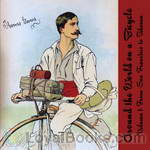 Around the World on a Bicycle, Vol. 1
Around the World on a Bicycle, Vol. 1
Thomas Stevens was the first person to circle the globe by bicycle, a large-wheeled Ordinary. His journey started in April 1884 in San Francisco from where he cycled to Boston to take a steamer to England. Crossing England, France, Central Europe and Asia Minor before he was turned back at the borders of Afghanistan. He returned part of the way to take a ship to Karachi, from where he crossed India. Another steam ship brought him from Calcutta to Hong Kong, and from Shanghai he set over to Japan, finally ending his journey after actually cycling 13... | |
By: Ellen Churchill Semple | |
|---|---|
 Influences of Geographic Environment
Influences of Geographic Environment
INFLUENCES OF GEOGRAPHIC ENVIRONMENT ON THE BASIS OF RATZEL'S SYSTEM OF ANTHROPO-GEOGRAPHY BY ELLEN CHURCHILL SEMPLE PREFACE The present book, as originally planned over seven years ago, was to be a simplified paraphrase or restatement of the principles embodied in Friedrich Ratzel's _Anthropo-Geographie_. The German work is difficult reading even for Germans. To most English and American students of geographic environment it is a closed book, a treasure-house bolted and barred. Ratzel himself realized that any English form could not be a literal translation, but must be adapted to the Anglo-Celtic and especially to the Anglo-American mind... | |
By: William Scott-Elliot (?-1930) | |
|---|---|
 Story of Atlantis and the Lost Lemuria
Story of Atlantis and the Lost Lemuria
This volume contains two publications by W. Scott-Elliot, namely The Story of Atlantis (1896) and The Lost Lemuria (1904). A theosophist and believer of the Occult, W. Scott-Elliot gives us a description of the history and structure of Atlantis and Lemuria, along with what he considers evidence of this. The Story of Atlantis is prefaced by Alfred Percy Sinnett. | |
By: Barry Pain (1824-1928) | |
|---|---|
 If Winter Don't
If Winter Don't
Barry Pain's parody takes a sharp knife to ASM Hutchinson's best selling novel 'If Winter Comes'.We follow the professional and marital decline of long suffering (and loving it), Luke Sharper, as his marriage to Mabel flounders while his love for Jona flourishes. It could only end in tears.....Or could it? ( | |
By: Benedetto Croce (1866-1952) | |
|---|---|
 Aesthetic as Science of Expression and General Linguistic
Aesthetic as Science of Expression and General Linguistic
One of the earliest works of this Italian philosopher and literary critic, Aesthetic as Science of Expression and General Linguistic marks the beginning of Croce's elaboration of his highly influential ideas of aesthetics. Croce defines art in terms of intuition and expression, thus replacing beauty as the primary criterion for aesthetic evaluation. | |
By: Matthew A. Henson (1866-1955) | |
|---|---|
 Negro Explorer at the North Pole
Negro Explorer at the North Pole
In this fascinating memoir, Matthew Henson describes the incredibly dangerous, exhausting, and bone-chilling trip to what was until then the never-before reached point on earth, the North Pole. "Robert Peary is remembered as the intrepid explorer who successfully reached the North Pole in 1909. Far less celebrated is his companion, Matthew Henson, a black man from Maryland. Henson's gripping memoir, first published in 1912, tells this unsung hero's story in his own words. Henson...was indispensable to the famous explorer's journey; he learned the language of the Eskimos, was an expert dog-sled driver and even built the sleds... | |
By: Frank Berkeley Smith (1869-1931) | |
|---|---|
 Real Latin Quarter
Real Latin Quarter
"Cocher, drive to the rue Falguière"--this in my best restaurant French. The man with the varnished hat shrugged his shoulders, and raised his eyebrows in doubt. He evidently had never heard of the rue Falguière. "Yes, rue Falguière, the old rue des Fourneaux," I continued. Cabby's face broke out into a smile. "Ah, oui, oui, le Quartier Latin." And it was at the end of this crooked street, through a lane that led into a half court flanked by a row of studio buildings, and up one pair of dingy waxed steps, that I found a door bearing the name of the author of the following pages--his visiting card impaled on a tack... | |
By: Unknown | |
|---|---|
 Magna Carta
Magna Carta
The original document is in Latin so this can only be a fairly rough approximation of the actual content. The text used is the first version in the Gutenberg collection. – Magna Carta is the most significant early influence on the long historical process that has led to the rule of constitutional law today. Magna Carta was originally created because of disagreements between the Pope, King John and his English barons over the rights of the King. Magna Carta required the king to renounce certain rights and respect certain legal procedures and to accept that the will of the king could be bound by law. | |
By: Charles Dickens (1812-1870) | |
|---|---|
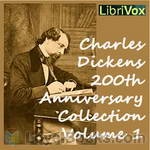 Charles Dickens 200th Anniversary Collection Vol. 1
Charles Dickens 200th Anniversary Collection Vol. 1
The Charles Dickens 200th Anniversary Collection comprises short works - fiction, essays, poetry, letters, magazine articles and speeches - and each volume will be a pot pourri of all genres and periods of his writing. This first volume is released on Dickens' 200th birthday, February 7th 2012. Further volumes will follow during the anniversary year.Volume 1 includes short stories including, amongst others, The Holly Tree, the first part of Holiday Romance and three pieces from Mugby Junction.Some... | |
By: John Lloyd Stephens (1805-1852) | |
|---|---|
 Incidents of Travel in Central America, Chiapas, and Yucatan, Vol. 1
Incidents of Travel in Central America, Chiapas, and Yucatan, Vol. 1
The year is 1838. The scene is the dense Honduran forest along the Copán River. Two men, John Lloyd Stephens and Frederick Catherwood, are about to rediscover Mayan civilization. Their guide, slashing through the rampant growth with his machete, leads them to a structure with steps up the side, shaped like a pyramid. Next they see a stone column, fourteen feet high, sculptured on the front with a portrait of a man, “solemn, stern and well fitted to excite terror,” covered on the sides with hieroglyphics, and with workmanship “equal to the finest monuments of the Egyptians... | |
By: Gaston Maspero (1846-1916) | |
|---|---|
 Manual of Egyptian Archaeology and Guide to the Study of Antiquities in Egypt
Manual of Egyptian Archaeology and Guide to the Study of Antiquities in Egypt
A handbook of Egyptian archaeology, issued by the British Museum, considered suitable for British tourists travelling to Egypt in the 19th Century. (Introduction by Timothy Ferguson) | |
By: Washington Irving (1783-1859) | |
|---|---|
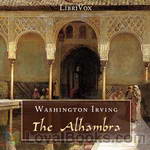 The Alhambra: A Series of Tales and Sketches of the Moors and Spaniards
The Alhambra: A Series of Tales and Sketches of the Moors and Spaniards
This is a collection of essays, verbal sketches, and stories by Washington Irving. Irving lived at the Alhambra Palace while writing some of the material for his book. In 1828, Washington Irving traveled from Madrid, where he had been staying, to Granada, Spain. At first sight, he described it as "a most picturesque and beautiful city, situated in one of the loveliest landscapes that I have ever seen." He immediately asked the then-governor of the historic Alhambra Palace as well as the archbishop of Granada for access to the palace, which was granted because of Irving's celebrity status... | |
By: Katharine Pyle (1863-1938) | |
|---|---|
 Tales of Folk and Fairies
Tales of Folk and Fairies
In "Tales of Folk and Fairies" Ms. Pyle tells 15 different children's stories from around the world; each more delightful than the last. Each story stands completely on it's own and although they were probably meant for children, adults will certainly enjoy them as well. | |
By: James T. Nichols (1865-?) | |
|---|---|
 Birdseye Views of Far Lands
Birdseye Views of Far Lands
Birdseye Views of Far Lands is an interesting, wholesome presentation of something that a keen-eyed, alert traveler with the faculty of making contrasts with all classes of people in all sorts of places, in such a sympathetic way as to win their esteem and confidence, has been able to pick up as he has roamed over the face of the earth for a quarter of a century.The book is not a geography, a history, a treatise on sociology or political economy. It is a Human Interest book which appeals to the reader who would like to go as the writer has gone and to see as the writer has seen the conformations of surface, the phenomena of nature and the human group that make up what we call a "world... | |
By: John Lloyd Stephens (1805-1852) | |
|---|---|
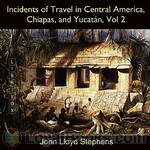 Incidents of Travel in Central America, Chiapas, and Yucatán, Vol. 2
Incidents of Travel in Central America, Chiapas, and Yucatán, Vol. 2
The year is 1838. The scene is the dense Honduran forest along the Copán River. Two men, John Lloyd Stephens and Frederick Catherwood, are about to rediscover Mayan civilization. Their guide, slashing through the rampant growth with his machete, leads them to a stone column, fourteen feet high, sculptured on the front with a portrait of a man, “solemn, stern and well fitted to excite terror,” covered on the sides with hieroglyphics, and with workmanship “equal to the finest monuments of the Egyptians... | |
By: William Morris (1834-1896) | |
|---|---|
 Signs of Change
Signs of Change
In the 1880s William Morris, the artist and poet famously associated with the Arts and Crafts movement, left the Liberal Party and threw himself into the Socialist cause. He spoke all over the country, on street corners as well as in working men's clubs and lecture halls, and edited and wrote for the Socialist League's monthly newspaper. Signs of Change is a short collection of his talks and writings in this period, first published in 1888, covering such topics as what socialism and work should be, and how capitalism and waste developed. | |
By: Pearl White (1889-1938) | |
|---|---|
 Just Me
Just Me
Perhaps the first memoir written by a film celebrity, Pearl White's Just Me gives a first-person account of the actress' rise to stardom. White guides us through her early childhood, her development as a performer, and finally to her breakout role in The Perils of Pauline--a role that made her the most popular "serial queen" of early cinema. Although romanticized and somewhat embellished, this book gives us a fascinating glimpse into the film industry's earliest years and the various myths of film stardom. | |
By: A Highland Seer | |
|---|---|
 Tea-Cup Reading and Fortune-Telling by Tea Leaves
Tea-Cup Reading and Fortune-Telling by Tea Leaves
Reading the Cup is essentially a domestic form of Fortune-telling to be practiced at home, and with success by anyone who will take the trouble to master the simple rules laid down in these pages: and it is in the hope that it will provide a basis for much innocent and inexpensive amusement and recreation round the tea-table at home, as well as for a more serious study of an interesting subject, that this little guide-book to the science is confidently offered to the public. | |
By: Leonardo da Vinci | |
|---|---|
 The Notebooks of Leonardo Da Vinci
The Notebooks of Leonardo Da Vinci
The Notebooks of Leonardo Da VinciPREFACEA singular fatality has ruled the destiny of nearly all the most famous of Leonardo da Vinci's works. Two of the three most important were never completed, obstacles having arisen during his life-time, which obliged him to leave them unfinished; namely the Sforza Monument and the Wall-painting of the Battle of Anghiari, while the third--the picture of the Last Supper at Milan--has suffered irremediable injury from decay and the repeated restorations to which it was recklessly subjected during the XVIIth and XVIIIth centuries... | |
By: Clement | |
|---|---|
 Women in the fine arts
Women in the fine arts
WOMEN IN THE FINE ARTS FROM THE SEVENTH CENTURY B. C.TO THE TWENTIETH CENTURY A. D.BY CLARA ERSKINE CLEMENT PREFATORY NOTE As a means of collecting material for this book I have sent to many artists in Great Britain and in various countries of Europe, as well as in the United States, a circular, asking where their studies were made, what honors they have received, the titles of their principal works, etc. I take this opportunity to thank those who have cordially replied to my questions, many of whom... | |
By: Beazley | |
|---|---|
 Prince Henry the Navigator
Prince Henry the Navigator
PRINCE HENRY THE NAVIGATORBy Evelyn Abbot, M.A.INTRODUCTION.The Greek And Arabic Ideas Of The World, As The Chief Inheritance Of The Christian Middle Ages In Geographical Knowledge. Arabic science constitutes one of the main links between the older learned world of the Greeks and Latins and the Europe of Henry the Navigator and of the Renaissance. In geography it adopted in the main the results of Ptolemy and Strabo; and many of the Moslem travellers and writers gained some additional hints from Indian, Persian, and Chinese knowledge; but, however much of fact they added to Greek cartography, they did not venture to correct its postulates... | |
By: Vincent Van Gogh (1853-1890) | |
|---|---|
 Letters of a Post-Impressionist
Letters of a Post-Impressionist
“Being the Familiar Correspondence of Vincent Van Gogh ... [Van Gogh's] art was appreciated during his life only by a very few and it is but within recent years that it has found admirers who in many cases have been most ardently enthusiastic. Of the following letters, some were addressed to his brother and the remainder to his friend E. Bernard. | |
By: Alexander Herrmann (1844-1896) | |
|---|---|
 Herrmann's Book of Magic
Herrmann's Book of Magic
Black Art Fully Exposed. A complete and practical guide to drawing-room and stage magic for professionals and amateurs, including a complete exposure of the black art. | |
By: Percy M. Turner | |
|---|---|
 Van Dyck
Van Dyck
A biography and critique of Van Dyck in The Masterpieces in Colour series. The Plates of the paintings are fully described and the artistic periods in his life's work are given as well as his place in history. | |